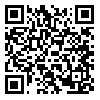BibTeX | RIS | EndNote | Medlars | ProCite | Reference Manager | RefWorks
Send citation to:
URL: http://jdm.tums.ac.ir/article-1-562-en.html
This investigation was performed according to the widespread application of base metal alloys and few articles published about the marginal integrity of restorations fabricated by these metals.Three standard dies of a maxillary first premolar were prepared with a flat shoulder finish line in buccal aspect and chamfer in palatal. One of them left with no change. On the buccal aspect of the second and third dies 135?and 1607 bevel were added respectively Using dual wax technique, nine wax patterns were formed on each die and casting procedure of selected non precious alloy was performed by centrifugal method. Marginal gaps of each copping seated on dies were measured by scanning electron microscope (SEM) with X500 magnification. Measurements were done on three areas of marked dies on buccal aspect. Measurement son palatal aspect was done on marked midpalatal point as control.Results and statistical analysis showed no significant difference among marginal gaps in lingual aspect.But on the buccal aspect there were statistically significant differences among the groups (P<0.001). Flat shoulder had the best marginal integrity (mean 4 micron). Shoulder with 160' bevel had the most marginal gap (mean 26.5 micron) and shoulder with 1357 bevel was between two other groups (mean 15.7 micron).
| Rights and Permissions | |
 |
This work is licensed under a Creative Commons Attribution-NonCommercial 4.0 International License. |




